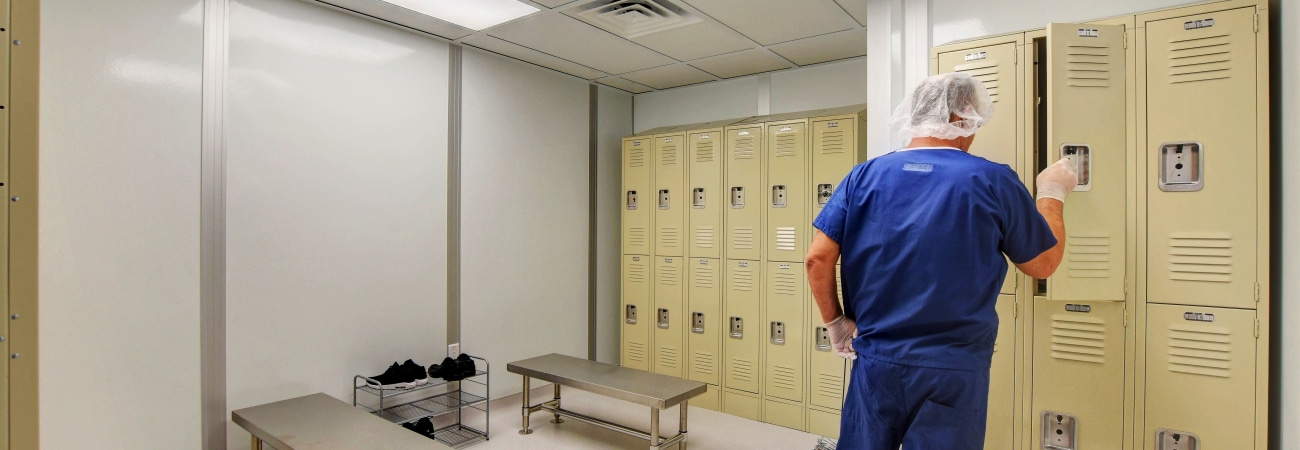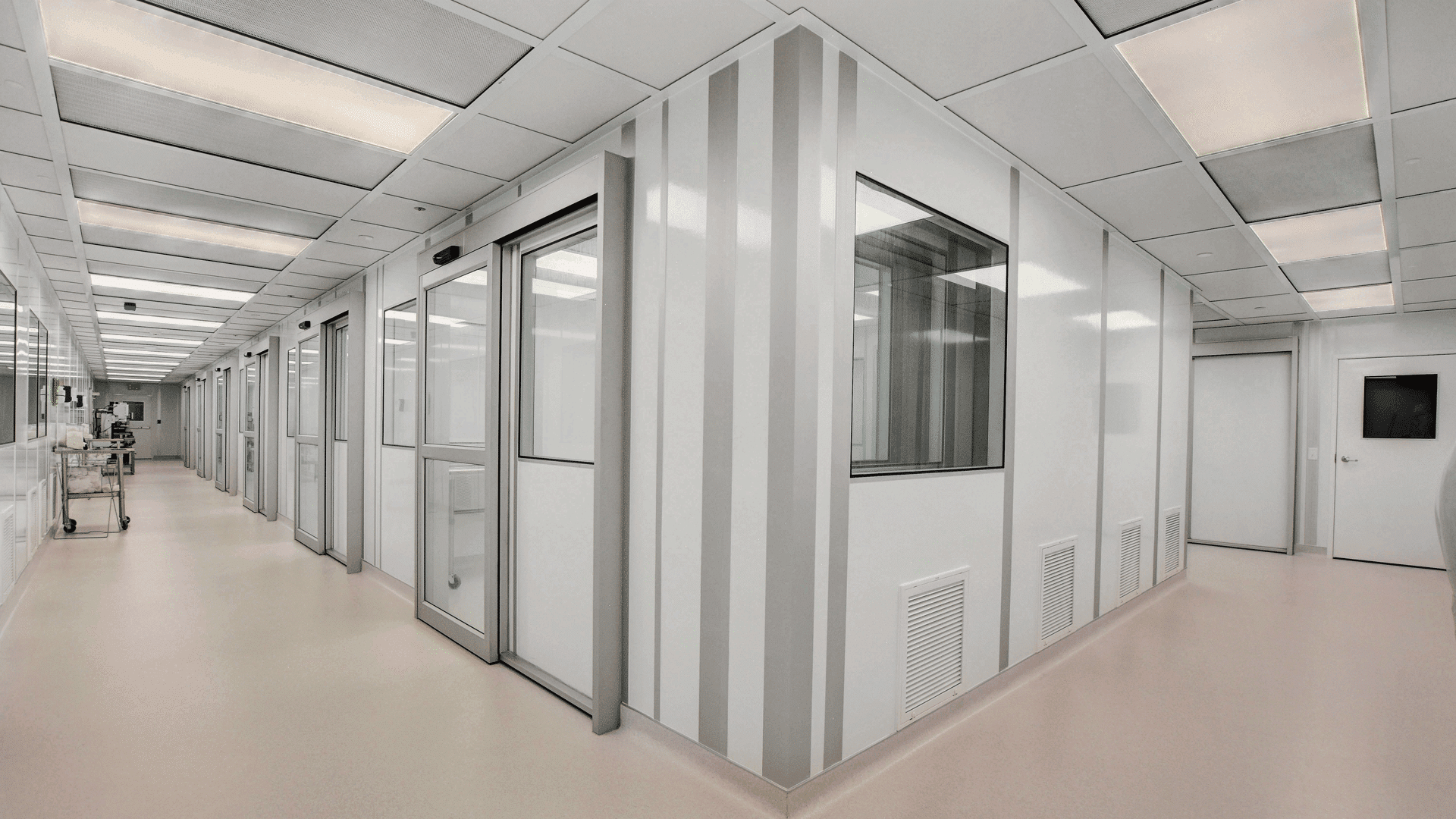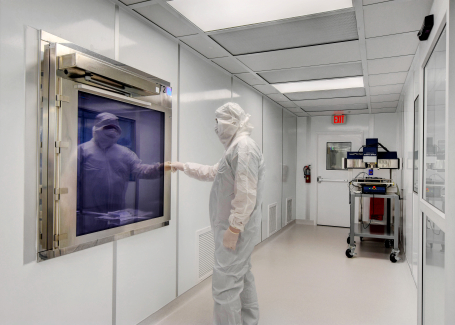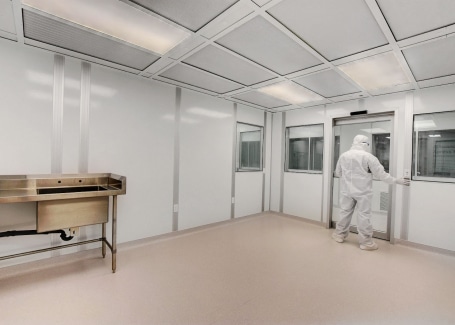Did you know that personnel contribute to around 80% of the contamination found in cleanrooms? This surprising fact underscores the necessity for proper gowning, and by extension, well-functioning gown rooms. In this article, we will cover what exactly a gown room is, what their purpose is, the types of gowning used in cleanrooms, and more.
What is a Gown Room?
A gown room is a special space within a cleanroom where personnel change from their street clothes into sterile attire before entering a controlled environment. It is often divided into a clean and a dirty side (usually marked by a step-over bench), with the dirty side for removal of street clothes and the clean side for putting on cleanroom gowning. The exact gowning procedures, however, will largely depend on what the cleanroom is being used for.
What’s the Purpose of a Gown Room?
As you might expect, the primary purpose of a gown room is to reduce the number of contaminants that may pass into cleaner spaces. As we said before, human beings are one of the most significant sources of contamination; we are shedding particles all the time. This can, of course, compromise the sterility of a cleanroom. By requiring personnel to change into special attire before they enter clean environments, gown rooms act as a sort of buffer or intermediary space.
What Types of Gowning are Used in Cleanrooms?
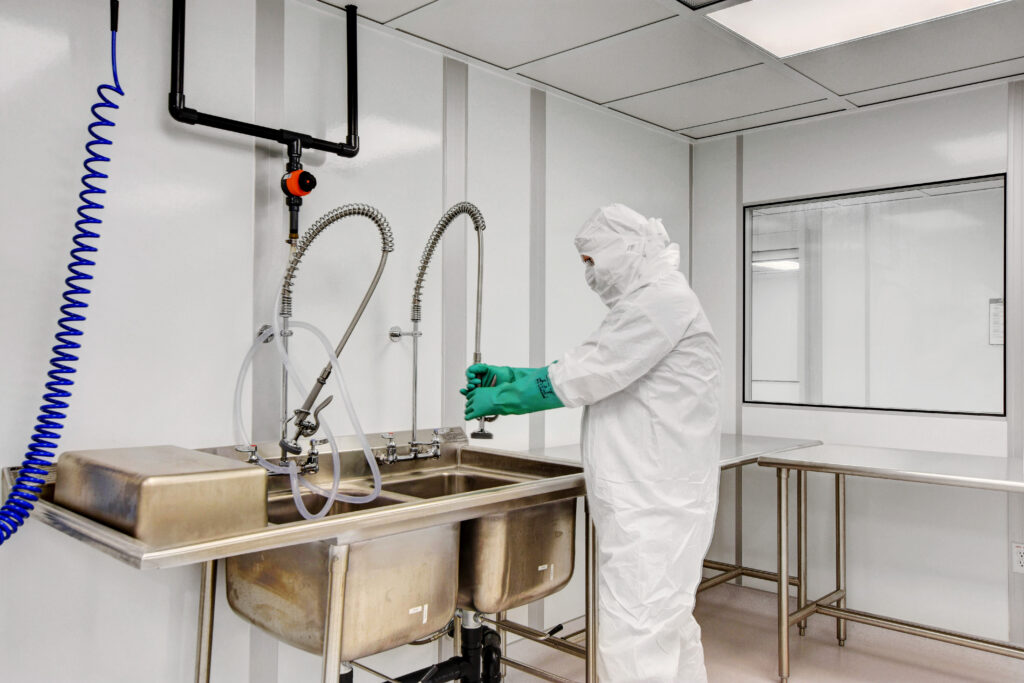
You may also be wondering what exactly cleanroom gowning consists of. The answer depends, as usual, on the level of cleanliness required by the environment. Typically speaking, gowning attire includes items such as head/hair covers, frocks, face masks, beard covers, gloves, coveralls, boots/boot covers, hoods, and facial enclosures.
In less strict environments, like ISO Class 8, basic gowning might include just head covers, frocks, and boots/boot covers. By contrast, stricter spaces, such as ISO Class 5, may require full-body coveralls, hoods, boots/boot covers, and sterile gloves.
Here is a table to summarize the recommended gowning for each ISO Class. (Please note that this list is not set in stone, and will also depend on how the cleanroom is being used.):
| ISO Class | Gowning |
|---|---|
| ISO Class 8 | Boots/boot covers, head covers, and frocks |
| ISO Class 7 | Boots/boot covers, head covers, and frocks |
| ISO Class 6 | Boots/boot covers, hoods, beard covers, and gloves |
| ISO Class 5 | Boots/boot covers, coveralls, hoods, masks, and gloves |
| ISO Class 4 | Boots/boot covers, hoods, coveralls, face masks, and gloves |
Entry and Exit Protocols
Furthermore, every cleanroom will have special entry and exit protocols. The protocol in each gown room will depend on the application of the cleanroom. As a result, we can only speak in general about these procedures.
Upon entry, personnel usually follow a sequence of actions to don their garments properly. This involves selecting the correct size of garments, putting on facemasks, hoods, and coveralls (whatever the ISO class requires), and making sure that all parts of the body are covered. Gloves are often the last item to be put on (if used).
When exiting the cleanroom, personnel either discard all garments or retain some items for reuse, depending again, on how strict the environment is. Extremely strict spaces, such as ISO Class 5 and above, may need to fully discard their garments. If the cleanroom is not as strict, then garments can be cleaned or reused if they are stored properly.
What is a Gown Room? The Bottom Line
In short, gown rooms are intermediary spaces where cleanroom personnel change from their street clothes into special attire. They are used to further reduce possible contamination from particles that people may have brought in with them, and also to act as transitional spaces between progressively cleaner rooms. The entry and exit protocols in gowning rooms will depend largely on the application of the cleanrooms, but in general, they are procedures to keep the environment sterile and personnel safe.


